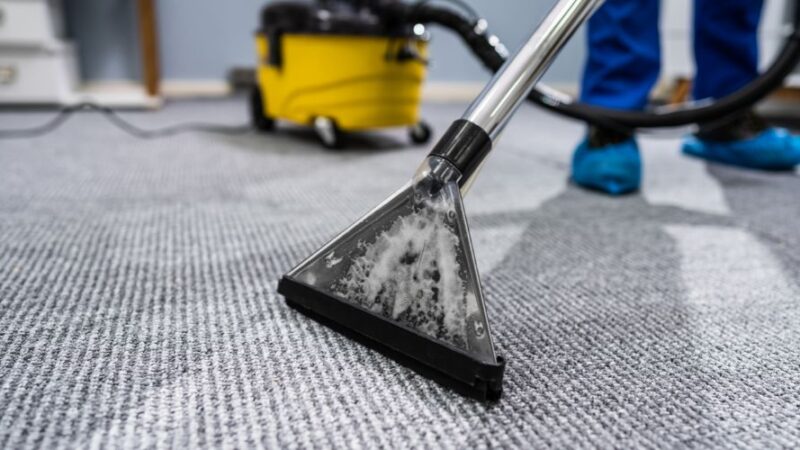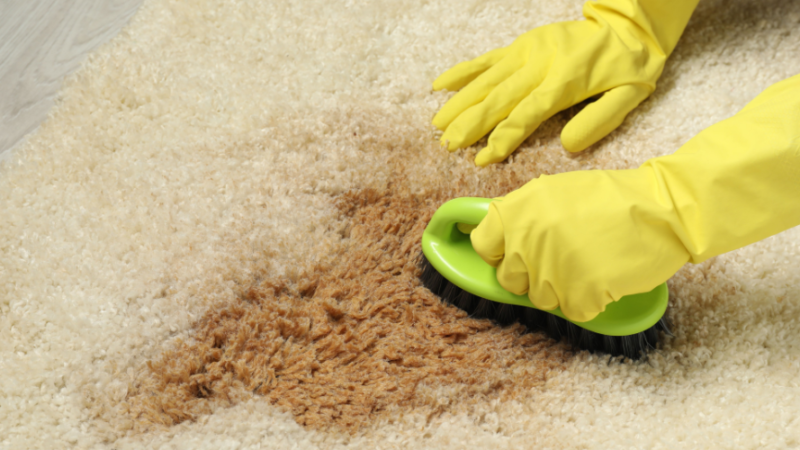What Happens If You Over-Wet Your Carpet During Cleaning?

Cleaning your carpet is essential for maintaining a healthy home environment. Whether you’re using a steam cleaner, carpet shampooer, or hiring professional services, deep cleaning helps remove dirt, allergens, and stains embedded in the fibers.
However, one of the most common mistakes made during this process is over-wetting the carpet-a problem that can cause a range of issues, some of which may lead to permanent damage if not addressed promptly.
In this article, we’ll explore what happens when you over-wet your carpet, why it’s harmful, and how you can prevent or fix the problem.
What Does “Over-Wetting” Mean?
Over-wetting occurs when excessive moisture is introduced to the carpet during cleaning. This can happen due to:
- Improper use of steam or shampoo machines
- Over-saturation from DIY methods
- Lack of sufficient drying time or airflow
- Using too much water or cleaning solution
Typically, carpet fibers are designed to absorb some moisture during cleaning, but when the carpet backing, underlay, or subfloor becomes soaked, you’ve crossed the line into over-wetting territory.
Check out How to Remove Tough Stains from Carpet?
Why Over-Wetting Your Carpet Is a Serious Problem
While a freshly cleaned carpet may look spotless, hidden moisture can quickly lead to a series of serious and costly problems.
1. Mold and Mildew Growth
One of the most dangerous consequences of over-wetting is mold and mildew.
🔍 Why it happens:
Carpet padding and the area between the carpet and the floor create a dark, damp environment-ideal conditions for mold spores to thrive.
⚠️ Risks:
- Mold can start developing in as little as 24 to 48 hours after over-wetting
- Releases airborne spores, which can affect indoor air quality
- Triggers allergies, asthma, and respiratory issues
- May result in permanent carpet damage and costly removal
2. Carpet Delamination
Delamination is when the carpet fibers separate from the backing due to prolonged moisture exposure.
🔍 Why it happens:
Water breaks down the adhesive glue that holds the carpet’s primary and secondary backing together.
⚠️ Risks:
- Results in wrinkles, bubbling, or buckling of the carpet
- Irreversible damage requiring full replacement
- Shortens the carpet’s lifespan drastically
3. Bad Odors
Even if mold isn’t visible, over-wet carpets often begin to emit a musty, sour, or mildewy smell.
🔍 Why it happens:
Moisture left behind reacts with dirt, debris, and bacteria trapped in carpet fibers.
⚠️ Risks:
- Unpleasant odors that can permeate the entire room
- Difficult to remove without professional deodorizing or re-cleaning
- May indicate hidden microbial growth
4. Browning or Carpet Stains
Over-wetting can cause discoloration known as browning, where dark or yellowish stains appear on the surface.
🔍 Why it happens:
Water seeps deep into the carpet, drawing up tannins, dirt, or residues from the pad or subfloor that rise to the surface during drying.
⚠️ Risks:
- Affects the appearance and aesthetic value of your carpet
- Stains are often difficult or impossible to remove
- May be mistaken for poor cleaning, leading to repeated cleanings (which make it worse)
5. Shrinkage and Warping
Certain carpet materials and backings are sensitive to water and may shrink or lose shape.
🔍 Why it happens:
Excess water causes the carpet to contract unevenly during drying, or the backing material may become misshapen.
⚠️ Risks:
- Carpet pulls away from the walls or tacks
- Results in ridges and ripples on the surface
- Requires professional re-stretching or replacement
6. Damage to the Subfloor
When water seeps through the carpet and underlay, it can affect the flooring structure beneath.
🔍 Why it happens:
Wood subfloors may absorb moisture and swell, warp, or rot, especially if drying is delayed.
⚠️ Risks:
- Structural damage requiring repair or replacement
- Increases risk of mold under the floorboards
- Adds significant repair costs to what started as routine cleaning
7. Longer Drying Time
A properly cleaned carpet should dry within 6 to 12 hours. Over-wet carpets can take over 24 to 48 hours to dry fully.
⚠️ Risks:
- Prolonged exposure to moisture means higher risk of microbial growth
- Rooms may be unusable for extended periods
- May need fans, dehumidifiers, or professional drying equipment
Don’t miss Steam Cleaning vs. Dry Cleaning: Which is Better?
How to Prevent Over-Wetting During Carpet Cleaning
To avoid these problems, follow these best practices for safe and effective carpet cleaning.
✅ Use the Right Equipment
- Use machines with adjustable water flow
- Avoid overuse of water when cleaning heavily soiled areas
- Rent professional-grade extractors or hire professionals if unsure
✅ Don’t Overuse Cleaning Solution
- More detergent does not mean cleaner carpets
- Excess soap attracts dirt and makes rinsing harder
- Follow product instructions strictly
✅ Make Multiple Dry Passes
- Always follow wet passes with multiple dry extraction passes
- Use a towel or dry mop to absorb residual moisture manually
✅ Ensure Proper Ventilation
- Open windows, use fans, and turn on dehumidifiers to speed up drying
- Avoid cleaning carpets during humid or rainy days
✅ Hire a Certified Carpet Cleaning Professional
- IICRC-certified professionals use moisture-controlled methods
- They assess your carpet type, adjust water levels accordingly, and use high-power dryers
- Ideal for delicate carpets or high-value rugs
What to Do If You’ve Over-Wet Your Carpet
If you suspect you’ve over-wet your carpet, take immediate action to prevent permanent damage.
🛠️ 1. Extract Excess Water
- Use a wet/dry vacuum or extractor
- Press towels into the carpet to soak up moisture
- Avoid walking on the area
💨 2. Increase Airflow
- Place fans around the room, blowing across the carpet
- Use a dehumidifier to pull moisture from the air
- Raise the carpet edge (if possible) to improve airflow underneath
🧼 3. Treat for Mold and Odors
- Spray an antimicrobial or enzyme-based deodorizer
- Monitor for musty smells or signs of mildew
- If odor persists, call a mold remediation service
🧑🔧 4. Call a Professional Cleaner
- If drying fails or damage appears, contact a professional
- They may recommend re-stretching, padding replacement, or subfloor inspection
Conclusion: Clean Smart, Not Wet
While deep cleaning your carpet is essential for hygiene, too much of a good thing can be harmful. Over-wetting can lead to mold growth, odors, structural damage, and expensive repairs-problems that often outweigh the benefits of cleaning.
By using proper techniques, equipment, and drying methods-or hiring trained professionals-you can avoid these issues and keep your carpet looking and feeling fresh for years to come.






